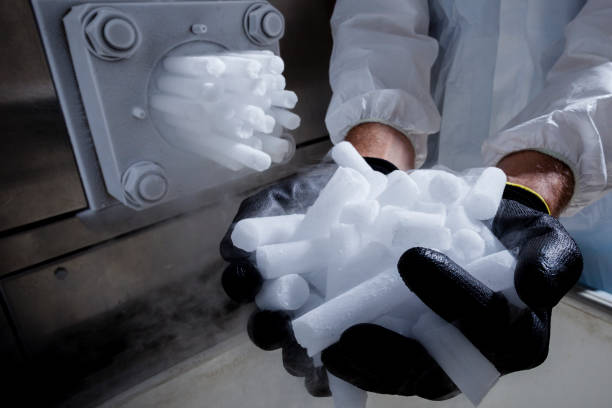Dry Ice Prices Surge in Pakistan Amid LCO2 Shortage

The surge in dry ice prices in Pakistan is impacting various industries due to a shortage of Liquid Carbon Dioxide (LCO2)
In recent times, Pakistan has been grappling with an unexpected challenge – a surge in dry ice prices due to a shortage of Liquid Carbon Dioxide (LCO2). This issue has far-reaching implications, affecting various sectors, from healthcare to the food industry. In this article, we will delve into the reasons behind this sudden price hike, its impact on businesses and individuals, and the potential solutions to mitigate this crisis.
Understanding the Dry Ice Dilemma
What is Dry Ice, and Why is it Essential?
Dry ice, also known as solid carbon dioxide, is a substance commonly used for its cooling properties. It is crucial in a multitude of applications, including preserving perishable goods, transportation of temperature-sensitive medications, and creating spectacular special effects in the entertainment industry.
The Role of LCO2

Prices Increased
Liquid Carbon Dioxide (LCO2) serves as the primary source for the production of dry ice. During the manufacturing process, LCO2 is converted into solid CO2, which then forms dry ice pellets or blocks. This transformation requires specialized equipment and facilities.
Factors Behind the Price Surge
Disruption in LCO2 Supply Chain
One of the main reasons behind the surge in dry ice prices is the disruption in the supply chain of Liquid Carbon Dioxide. Factors such as unexpected shutdowns in LCO2 production facilities and increased demand have led to a scarcity of this crucial resource.
High Demand in Healthcare
The ongoing global pandemic has led to an unprecedented demand for dry ice in the healthcare sector. With the distribution of COVID-19 vaccines requiring ultra-cold storage, hospitals and vaccination centers heavily rely on dry ice to maintain the necessary temperatures.
Impact on the Food Industry
The food industry has also been significantly affected by the dry ice price surge. Many businesses rely on dry ice for preserving and transporting frozen foods, making it an essential component of their operations.
Ramifications for Businesses
Increased Operational Costs
Businesses that heavily depend on dry ice are experiencing a substantial increase in operational costs. The higher prices of dry ice are directly impacting their bottom line, leading to tough decisions regarding pricing and profitability.
Supply Chain Disruptions
The shortage of dry ice has caused supply chain disruptions, affecting the timely delivery of essential goods. This, in turn, has a ripple effect on various industries, from pharmaceuticals to the floral industry.
Seeking Solutions
Exploring Alternative Cooling Methods
To mitigate the impact of the dry ice price surge, businesses are exploring alternative cooling methods. Some are opting for electric refrigeration systems, which, although more energy-intensive, can provide a temporary solution.
Increasing LCO2 Production
Government agencies and private companies are working together to boost the production of Liquid Carbon Dioxide. Initiatives to expand LCO2 production facilities are underway to ensure a stable supply for dry ice production.
Dry Ice Pakistan – A Solution in Progress

The surge in dry ice prices in Pakistan is impacting various industries due to a shortage of Liquid Carbon Dioxide (LCO2)
Dry Ice Pakistan (www.dryice.pk) is one of the largest producers and suppliers of dry ice in Pakistan. They are actively working to reduce the shortage of dry ice nationwide. With their expertise and dedication, they play a pivotal role in alleviating the challenges posed by the LCO2 shortage.
Conclusion
The surge in dry ice prices in Pakistan, driven by a shortage of Liquid Carbon Dioxide, presents a multifaceted challenge affecting various industries. Businesses are adapting to this crisis by exploring alternative cooling methods and advocating for increased LCO2 production. Dry Ice Pakistan’s efforts in addressing this issue are commendable, and as the nation grapples with this challenge, it is evident that a collaborative effort is required to find sustainable solutions and ensure the availability of dry ice for critical applications.
FAQs
1. Why is there a shortage of Liquid Carbon Dioxide (LCO2) in Pakistan?
The shortage of LCO2 in Pakistan can be attributed to disruptions in the supply chain and increased demand, particularly in the healthcare sector.
2. How are businesses coping with the rising prices of dry ice?
Businesses are exploring alternative cooling methods and advocating for increased LCO2 production to mitigate the impact on their operations.
3. What are some alternative cooling methods being considered?
Some businesses are opting for electric refrigeration systems as an alternative to dry ice, despite their higher energy consumption.
4. How is the shortage of dry ice affecting the food industry?
The food industry relies on dry ice for preserving and transporting frozen goods, and the price surge is increasing operational costs for these businesses.
5. What is Dry Ice Pakistan doing to address the LCO2 shortage?
Dry Ice Pakistan is actively working to reduce the shortage of dry ice nationwide, playing a crucial role in alleviating the challenges posed by the LCO2 shortage.


